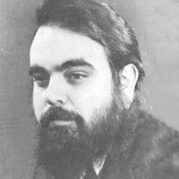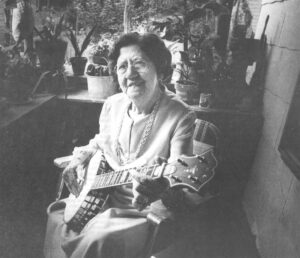David Peyton
- 1975

Fellowship Title:
- Cajun and Appalacian: Two Cultures in Transition
Fellowship Year:
- 1975

Folk cultures: In conclusion…
James Domengeaux — Cajun by birth and preference — leaned back in his chair in his Lafayette, La., law office. “After all,” he said, “isn’t this what America is all about? I mean freedom. Freedom to be a Cajun, to live the Cajun life without being ashamed of it. Without being forced into the mold that so much of America has been forced into. Why shouldn’t I be a Cajun if I want to be? And why shouldn’t I be relatively sure that no one, especially the government, is going to take any sanctions against me because of who I am?” Domengeaux speaks of freedom in terms of being a Cajun. A thousand miles away, Jennie Wilson, a 76-year-old Appalachian spitfire, lives her Appalachian life on Crooked Creek, a former coal camp, now a “bedroom community” to the larger town of Logan. Jenny Wilson of Peach Creek, W. Va. “I’m proud to be a hillbilly,” she says. “And I’m always ready to defend myself. I remember one time; some people from Ohio were putting us
Education: A Cultural Saviour?
The Cajuns of southern Louisiana and the mountain people of Appalachia know very little about their heritage. The fact that their histories, customs and traditions are locked away in the past has had a profound impact on the present status of their decaying cultures. It’s ironic, to say the least, that these two American folk cultures, so full of rich heritage, could be nearly lost due to a basic failure of the older members of the cultures to relay heritage to the youngsters. But some sociologists believe this to be the case. The recent out-migration of the young from both cultures may be due in part to the fact that the young have lost their sense of belonging. “Of course, economic considerations are perhaps most important in the loss of people from the Appalachian states,” one observer notes. “But the fact that young Appalachians have felt their region has no history, no positive attributes, has made it easier for mountain youngsters to leave.” The same holds true in southern Louisiana where, even today, few Cajuns
Cajun Music: A Culture’s Heartbeat
Saturday night isn’t quiet in southern Louisiana. The sounds of accordions, guitars, fiddles and triangles pierce the air from Houma to Lake Charles, from the tiny French Casino Bar at Mamou to the bigger nightclubs in and around Lafayette. It’s Cajun music being played, a sound unlike any other folk music in America. It’s a sound apart from mainstream American culture, but there’s evidence mass culture may be ready to take Cajun music to its heart. Like the Cajun French language, Cajun music is a strong glue that holds the folk culture together. It is a way of expressing emotion, of feeling part of the old culture, of displaying musical skills handed down from one generation to another for more than 200 years. Not every Cajun likes Cajun music, just as not every native of Nashville, Tenn., cares for hillbilly music. But the Cajun music cult is strong despite the recent influence of modern rock and country and western. While there are those who believe that preserving the French language will preserve the Cajun culture,

Portrait of the Artist as a Cajun
George Rodrigue paints pictures of ghosts. They hover in his dark Louisiana landscapes, suspended between heaven and earth, not really belonging to this life or the life hereafter. They stand like cutouts, pasted on a backdrop of shadow and mystery. They are Rodrigue’s Cajuns, ripped from the past and placed in the present. They are people without homes, without motion and without futures. “All my people just got dressed up for a Saturday afternoon,” Rodrigue says. “But when they finished dressing, they realized there was nothing to do. So, they sit in trees, they ride mules, they eat ice cream under live oaks. Or, they just sit and stare.” Rodrigue is one of the people he paints. But he’s much more. He may be the first Cajun to develop a new style of painting to portray his people. He’s certainly one of the first Cajuns to recognize the potential of the Cajun folk culture. But most important, perhaps, he may be the one clear signal that the Cajun culture is falling apart and coming to
Look What They’ve Done to my French, Mama: Attempts to Save Louisiana French
James Domengeaux, an aging Lafayette attorney, pounded the cluttered desk in his office a stone’s throw from one of Louisiana’s most impressive cathedrals. “Dammit. It’s a wonder we’re not all warped,” he spat. “After all, we’re just coming from a time when there were certain punitive, abrasive actions taken when one spoke the French language. We became ashamed to speak French. You couldn’t help but feel ashamed, especially if you were young and immature and were told you were going to have to stay after school because you spoke French. Or maybe the teacher would hit you on the head with a ruler. We were told that only poor people and ignorant people spoke French. Can you believe that?” Though his hair is gray and his body shows the marks of 66 long, hard years of labor, Domengeaux still bristles like a young tomcat at the thought of what has happened to his native tongue. Domengeaux (pronounced Doe-mawn-joe) is a native of Lafayette and calls himself a Cajun. He was reared speaking the French language.
